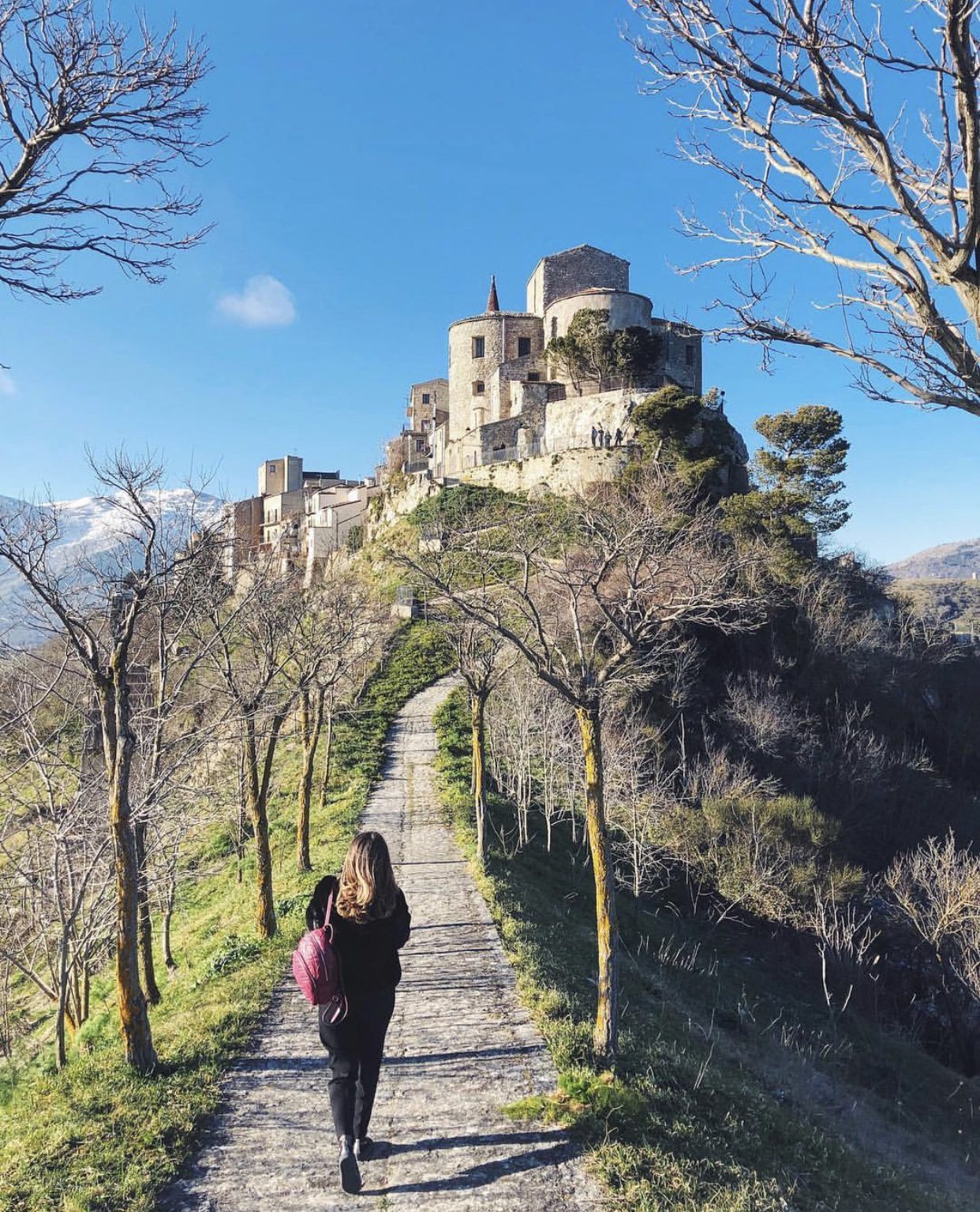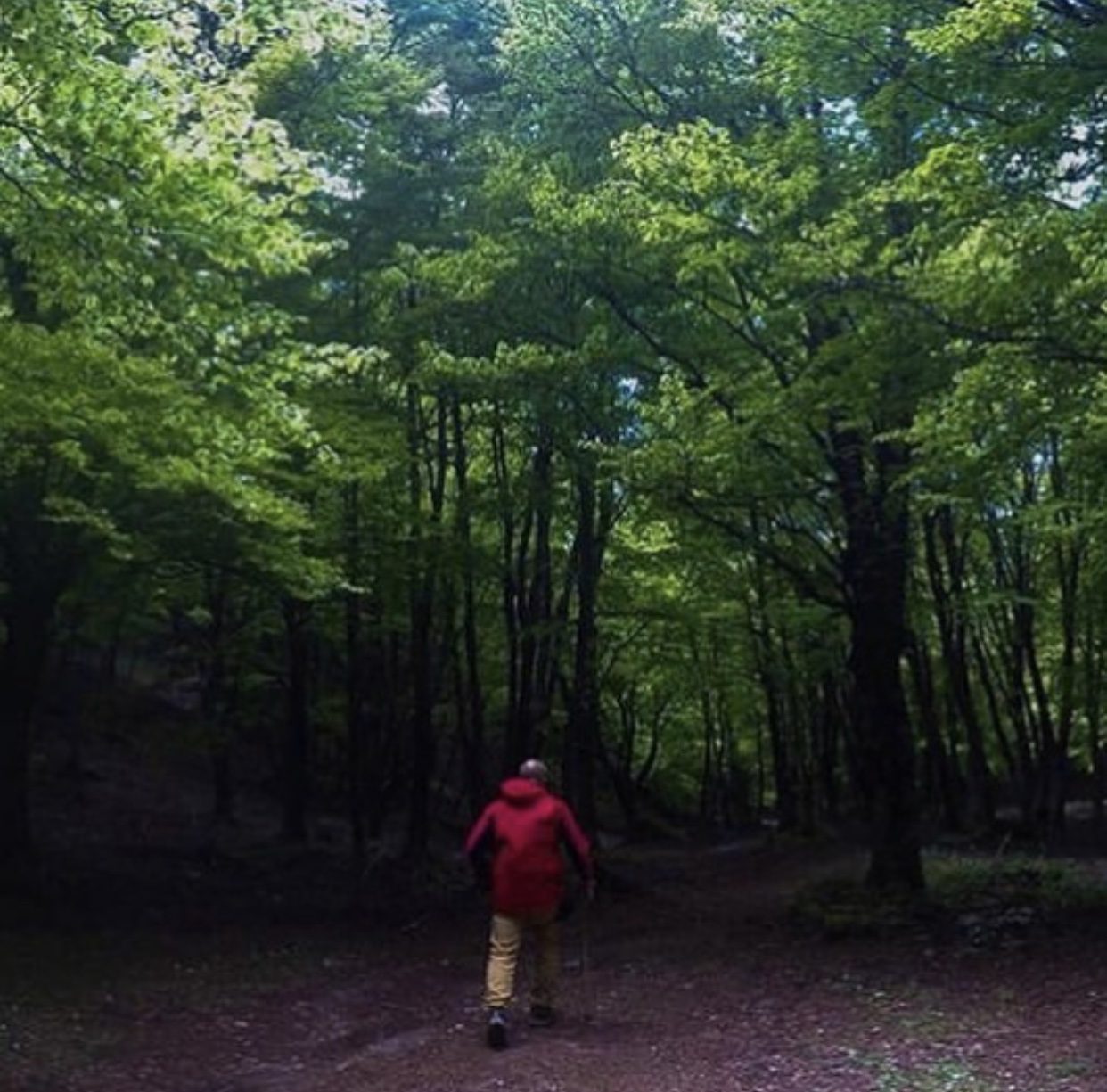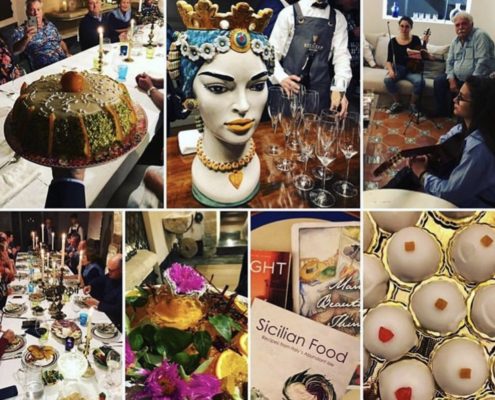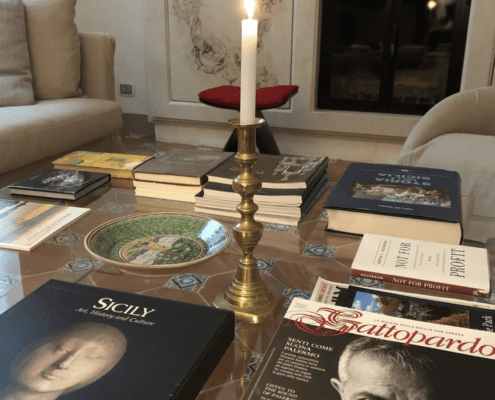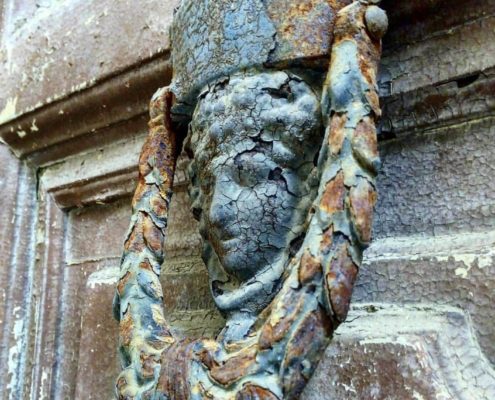Where is the most beautiful town in Italy? Sicily of course.
Walking along the back tiny streets, around every corner, in every square is like finding the most beautiful town in Italy. And that’s exactly what Petralia Soprana is, the winner of the title “most beautiful village”.
“ Petralia Soprana is a beautiful old town, surrounded by Mediterranean vegetation and forests. Its extraordinary history is rooted in the ninth century when Batraliah, after having been conquered by the Normans by Count Ruggero de Altavilla, was fortified assuming the current urban connotation, which elevates it to a magnificent Madonite city.“
Nearby, down the road and up the hill from the most beautiful town in Italy, is another Sicilian gem, the town of Polizzi, a small but precious pearl set in Madonie.
Polizzi has wonderful art and cultural history, just like Petralia Soprana.
Let’s start with the art.
Renaissance Art – After two centuries in a Jesuit monastery near Termini Imerese on the coast, the painting “Madonna and Child” by famous 15th century Flemish artist, Rogier van der Weyden (1400-1467) was installed in Polizzi’s Chiesa Madre in the late 17th century, following the church’s Baroque restoration.
The painting arrived on Sicily’s shores in the late 15th century, following the shipwreck of a vessel taking it to an unknown destination in the Mediterranean.
More than just the most beautiful town in Italy is the culture immortalized in “The Leopard”
Brush up on what’s in store by watching the 1963 classic “The Leopard” starring Burt Lancaster and the ever-beautiful Claudia Cardinale set in Polizzi telling the story of Garibaldi’s troops as they begin the unification of Italy in 1860, at the same time recounting the struggles of an aristocratic Sicilian family as they grudgingly adapt to the sweeping social changes undermining their way of life.
As a special treat on Dominique Rizzo’s tour, you will be part of the unique cultural event, at a superb dinner at Palazzo Notar Nicchi, inspired by Giuseppe Tomasi di Lampedusa’s novel “The Leopard” at The Sicilian House. Wine, dine, listen to tasteful readings from Giuseppe Tomasi di Lampedusa’s novel, ‘The Leopard’ Vintage 2007 & Vincent Schiavelli’s book “Many Beautiful Things -Stories and recipes from Polizzi Generosa”. It’s a dramatic experience with a difference.
Churches to bring to your knees.
The Chiesa Madre, Santa Maria Maggiore is the ‘mother church’, originally of Norman origin. The church was rebuilt in the 14th century and fully restored in the Baroque style in 1690. Elements of the earlier history of the building are visible on the right-hand side, in the form of the Norman portal and two long, narrow windows. Many masterpieces from the 15th and 16th centuries are displayed here.
Not-to-be- missed Ruins of the Chiesa della Commenda
On the east side of town, down a cul-de-sac (Via Garaffo) off the main SS643, which circles the town, are the picturesque remains of the Church of the Commenda (now called simply La Commenda) dating from 1177, it is one of Polizzi’s oldest churches and was the first important structure to be built outside the city walls. The church, commissioned by Roger d’Aquila, was owned by the Sovereign Military Order of Malta who had the task of protecting the pilgrims and providing assistance to the sick. In its time, it was one of the richest such Commendas in the whole of Sicily.
The wonder of Town Halls and Museums of Greek vases
Located on the main street, Via Giuseppe Garibaldi, is the impressive Town Hall (Comune), built in the 17th century as a Jesuit college. Walk up the imposing steps and through the windows where you can look down on Greek ruins from 400BC. Nearby on the Piazza Gramsci, is the largely unused Jesuit church, San Girolamo, with its interesting octagonal tower and lantern. Its imposing Baroque stone portal is one of the most beautiful pieces of stone sculpture in the town.
Next door is the Civico Museo Archaeologico Museum with its fascinating display of Greek remains, including beautiful Greek vases and figurines, excavated from the ancient necropolis nearby,
Historic Aquaducts
There are the four remaining arches of the aqueduct built-in 1476 that brought water down to Polizzi from the mountains above; and alongside it is a fountain, dating from the mid-19th century, donated by a local Duke, to provide fresh, unpolluted mountain water, following the severe cholera epidemic that struck Sicily in the 1830s.
Fresh air, stunning views and mountain walks
Polizzi, located on a ridge, offers an unparalleled vista of the spectacular Madonia mountains. To enjoy these views go to the Via Giovanni Borghese (named after the famous 20th-century Italian writer, who was born in Polizzi) and then to belvedere (summer house) at Piazza XXVII Maggio, at the western end of Via Giuseppe Garibaldi.
Everywhere, there are perfumed green walking tracks, some a little steep, like a hike to the Madonna del’Alto – a scenic convent, used only for part of the year, which is perched on a steep precipice, with spectacular views eastwards to Mount Etna; or take the perfect route on well-marked paths through cool shady woodland of beech forests such as in Piano Cervi, or a hike to the Madonna del’Alto – a scenic convent, used only for part of the year, which is perched on a steep precipice, with spectacular views eastwards to Mount Etna.
The tradition of food
The people of Polizzi Generosa are rightly proud of their food heritage and culture. They care about food; its taste, its quality, where it comes from. Shops proudly display locally made organic cheeses, seasonal vegetables, and fruit, wonderful cakes and ice cream made in the bakeries at the back of the local shops and bars, ricotta from the sheep herds on the hills and locally produced meat and sausages. Everything is seasonal: oranges in the winter/spring, porcini in the autumn, beans, apricots and dark cherries for amarena gelato in spring, almonds (for cakes) in summer.
Life in Polizzi revolves around the weekly food markets, where the queues are animated in anticipation of the parmesan, meat and inexpensive and delicious fruit, vegetables and sweets.
To walk the streets of the most beautiful towns in Sicily, experience The Leopard, peak into some of the most historical churches in Europe and gaze at 16th century paintings, join Dominique Rizzo on her food, wine and cultural tours of Sicily. Bookings for the last 2 places in 2020 close in March.

